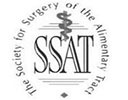Endoscopic Retrograde Cholangiopancreatography
Endoscopic retrograde cholangiopancreatography (ERCP) is a diagnostic tool that enables your physician to diagnose and treat problems of the liver, gallbladder, bile ducts and pancreas. ERCP combines X-rays and endoscopy, which includes the use of a long, thin, flexible tube with a tiny video camera and light on the end to carefully examine the inside of the upper digestive system.
ERCP is usually indicated to diagnose and treat conditions of the bile or pancreatic duct which include blockage or narrowing of the ducts due to gallstones, tumours, infection, valves that don't open properly, scarring, accumulation of tissue debris and fluid, or inflammation of the pancreas. ERCP is also considered for obtaining a biopsy.
ERCP is performed on an outpatient basis under local anesthesia. You are placed on an X-ray table, on your back or side. Your doctor inserts the endoscope through your mouth, down into the stomach and into the upper part of the small intestine (duodenum). Once the endoscope reaches the papilla, the place where the pancreas and bile ducts meet, a thin tube called a catheter will be inserted through the endoscope and a dye is injected into the ducts. X-ray images are taken to diagnose any problem related to the ducts. When a problem is detected, your doctor may choose to treat your condition immediately by:
- Opening narrowed duct regions with an inflatable balloon, and placing stents (metal tubes) to keep the duct open
- Enlarging a narrowed or hardened sphincter (muscles regulating the flow of bile and digestive juices into the small intestine) using an electrically heated wire that is passed through the endoscope
As with any procedure, ERCP may involve certain risks and complications which include pancreatitis (inflammation of the pancreas), infection, bleeding and tissue damage.


















